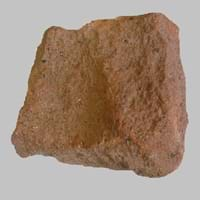Marl and Ignimbrite
Definition
Definition
Marl is an unconsolidated sedimentary rock consisting of clay and lime
Ignimbrite is a volcanic rock consisting mainly of pumice fragments, formed by the consolidation of material deposited by pyroclastic flows
History
Origin
Unknown
New Zealand
Discoverer
Unknown
Patrick Marshall
Etymology
From Old French marle, from Late Latin marglia
From Latin ignis fire + imber, imbr- shower of rain, storm cloud + -ite
Class
Sedimentary Rocks
Igneous Rocks
Sub-Class
Durable Rock, Soft Rock
Durable Rock, Medium Hardness Rock
Family
Group
Not Applicable
Volcanic
Other Categories
Fine Grained Rock, Opaque Rock
Fine Grained Rock, Opaque Rock
Texture
Texture
Earthy
Aphanitic
Color
Beige, Brown, Green, Grey, White
Beige, Black, Brown, Grey, Pink, White
Maintenance
Less
More
Durability
Durable
Durable
Water Resistant
Yes
Yes
Scratch Resistant
No
Yes
Stain Resistant
No
No
Wind Resistant
No
Yes
Acid Resistant
No
No
Appearance
Rough and Dull
Dull, Vesicular and Foilated
Uses
Architecture
Interior Uses
Decorative Aggregates, Floor Tiles
Decorative Aggregates, Floor Tiles, Homes, Interior Decoration
Exterior Uses
As Building Stone, Roof Tiles
As Building Stone, Garden Decoration, Office Buildings, Paving Stone
Other Architectural Uses
Curbing
Curbing
Industry
Construction Industry
Cement Manufacture, Construction Aggregate, for Road Aggregate, Making natural cement, Raw material for the manufacture of mortar
Building houses or walls, Construction Aggregate
Medical Industry
Not Yet Used
Not Yet Used
Antiquity Uses
Artifacts, Jewellery, Sculpture, Small Figurines
Artifacts, Monuments, Sculpture, Small Figurines
Other Uses
Commercial Uses
Creating Artwork, Soil Conditioner
Cemetery Markers, Commemorative Tablets, Creating Artwork
Types
Types
Clay Marl ,Blue Marl, Red Marl, High Bank Marl, Shell Layer Marl, Under Shell Layer Marl, Sand Marl, Green Marl, Grey Marl and Clayey Marl
Not Available
Features
Generally rough to touch, Is one of the oldest rock, Splintery, Very fine grained rock
Always found as volcanic pipes over deep continental crust
Archaeological Significance
Monuments
Not Yet Used
Used
Famous Monuments
Not Applicable
Data Not Available
Sculpture
Used
Used
Famous Sculptures
Data Not Available
Data Not Available
Pictographs
Used
Used
Petroglyphs
Used
Used
Figurines
Used
Used
Fossils
Present
Absent
Formation
Formation
Marl forms when very fine-grained clay particles are deposited in water which settles at the bottom of water bodies and are compacted by overlying sediment; the water squeezes out and hence forming Marl rock.
Ignimbrites are formed from very poorly sorted mixture of volcanic ash or tuff and pumice lapilli, commonly with scattered lithic fragments.
Composition
Mineral Content
Calcite, Clay, Dolomite, Gypsum, Micas, Pyrite, Quartz
Apatite, Biotite, Calcite, Chlorite, Feldspar, Hematite, Hornblade, Ilmenite, Magnetite, Olivine, Pyroxene, Quartz
Compound Content
Aluminium Oxide, NaCl, CaO, Iron(III) Oxide, Silicon Dioxide
Ca, NaCl
Transformation
Metamorphism
No
Yes
Types of Metamorphism
Not Applicable
Burial Metamorphism, Contact Metamorphism, Hydrothermal Metamorphism, Impact Metamorphism, Regional Metamorphism
Weathering
Yes
Yes
Types of Weathering
Biological Weathering, Chemical Weathering
Biological Weathering, Chemical Weathering
Erosion
Yes
Yes
Types of Erosion
Chemical Erosion, Coastal Erosion, Water Erosion, Wind Erosion
Chemical Erosion, Coastal Erosion
Properties
Physical Properties
Hardness
2-3
4-6
Grain Size
Very fine-grained
Fine Grained
Fracture
Conchoidal
Uneven
Streak
White
White
Porosity
Highly Porous
Highly Porous
Luster
Dull
Vitreous to Dull
Compressive Strength
Not Available
243.80 N/mm2
5
Cleavage
Not Available
Not Available
Toughness
2.6
Not Available
Specific Gravity
2.2-2.8
2.73
Transparency
Opaque
Opaque
Density
2.4-2.8 g/cm3
1-1.8 g/cm3
Thermal Properties
Specific Heat Capacity
Not Available
0.20 kJ/Kg K
25
Resistance
Heat Resistant, Impact Resistant
Heat Resistant, Impact Resistant, Pressure Resistant, Wear Resistant
Reserves
Deposits in Eastern Continents
Asia
India, Pakistan, Russia
Afghanistan, Armenia, Azerbaijan, Burma, Cambodia, China, India, Indonesia, Iran, Japan, Malaysia, Mongolia, Nepal, North Korea, Pakistan, Saudi Arabia, Syria, Taiwan, Thailand, Turkey, Vietnam, Yemen
Africa
Ethiopia, Kenya, Morocco, South Africa
Cameroon, Cape Verde, Chad, Djibouti, Eritrea, Ethiopia, Kenya, Libya, Madagascar, Nigeria, Rwanda, South Africa, Sudan, Tanzania, Uganda
Europe
Austria, France, Germany, Greece, Italy, Romania, Scotland, Spain, Switzerland
France, Georgia, Germany, Greece, Iceland, Italy, Netherlands, Poland, Portugal, Spain, United Kingdom
Others
Not Yet Found
Antarctica, Hawaii Islands
Deposits in Western Continents
North America
USA
Canada, Costa Rica, Panama, USA
South America
Colombia, Ecuador, Peru
Argentina, Bolivia, Brazil, Chile, Colombia, Ecuador
Deposits in Oceania Continent
Australia
New South Wales, Victoria, Western Australia
Central Australia, Western Australia
All about Marl and Ignimbrite Properties
Know all about Marl and Ignimbrite properties here. All properties of rocks are important as they define the type of rock and its application. Marl belongs to Sedimentary Rocks while Ignimbrite belongs to Igneous Rocks.Texture of Marl is Earthy whereas that of Ignimbrite is Aphanitic. Marl appears Rough and Dull and Ignimbrite appears Dull, Vesicular and Foilated. The luster of Marl is dull while that of Ignimbrite is vitreous to dull. Marl is available in beige, brown, green, grey, white colors whereas Ignimbrite is available in beige, black, brown, grey, pink, white colors. The commercial uses of Marl are creating artwork, soil conditioner and that of Ignimbrite are cemetery markers, commemorative tablets, creating artwork.
|
||
|
||
|










